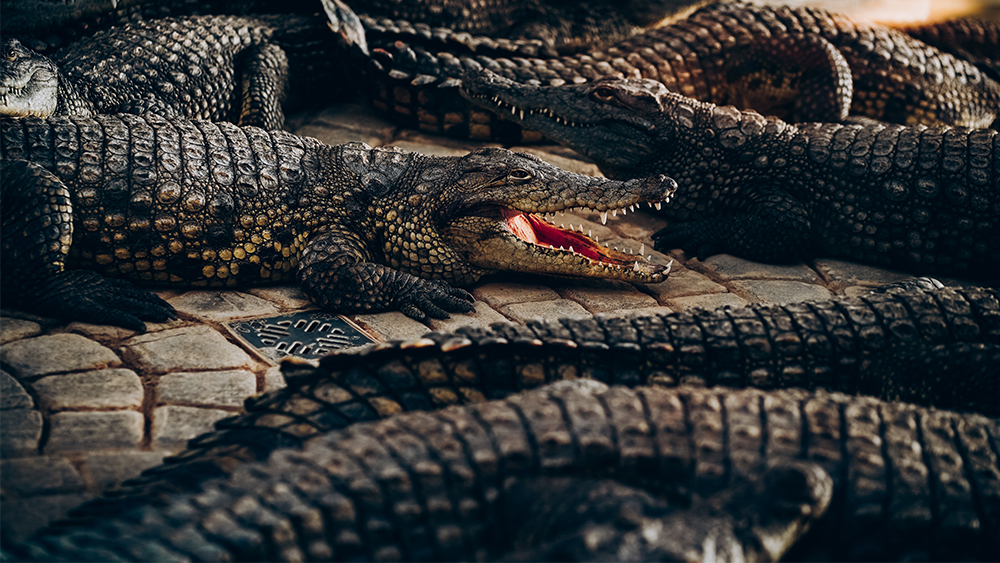The Thalattosuchia are an extinct group of marine crocodylomorphs (a group that includes the crocodiles) that allegedly transitioned from land to water during the Mesozoic Era, according to evolutionary theory. Although they are sometimes called sea crocodiles, the Thalattosuchia are not classified within the Crocodilia.
These animals have made the science news because computed tomography (CT) has supposedly shown an evolutionary feature of these crocodylomorphs regarding the structure of their inner ear, “New insights into the anatomy of the inner ear of prehistoric reptiles, the thalattosuchians, revealed details about one of these evolutionary turning points.”1
The article begins with an unobserved, unverifiable, and unscientific statement, “The tree of life is rich in examples of species that changed from living in water to a land-based existence.”1 This dubious statement includes the hypothetical evolution of the fish-to-tetrapod occurring many million years ago. But evolutionist Michael Denton stated,
Since I wrote Evolution: A Theory in Crisis [1985], no forms illustrating a genuinely transitional state between a fin and limb have come to light. Further, nothing gained through the extensive genetic and developmental studies of limbs provides any support for the notion that the autopod [the most distal part of the tetrapod limb] was acquired gradually via a vast number of tiny microevolutionary adaptive steps over hundreds of thousands of generations.”2
So, the transition from water to land is very difficult to justify, as is the conversion from land to water. Regardless, it is maintained by some that these evolutionary events are factual.
Evolutionary paleontologist Michael Benton3 stated that the marine thalattosuchia are highly derived, meaning it’s in an evolutionarily advanced character state. In other words, it’s always been a marine thalattosuchian. This is just what is expected on the basis of creation science. There are no documented transitions from land to water in these fossils or in any other source.
And yet, the following paragraph describes a typical evolutionary ‘just-so’ story of that happening.
Interestingly, thalattosuchians developed the reduction of their inner ear labyrinth only after a long semiaquatic phase that lasted tens of millions of years. First, their skeleton changed during this phase—limbs became flippers, the body became streamlined, which allowed them to move efficiently in the water and improved their ability to swim. Only then did the changes in the inner ear develop, possibly as a response to changing sensory requirements, when the thalattosuchians moved into deeper, more open waters.1
There is, of course, no paleontological evidence of how “limbs became flippers, [and] the body became streamlined.” We are just expected to believe it.
Creationists would agree with at least one part of this fantastical story, “These results illustrate that the inner ear morphology of an animal is strongly linked to its habitat.”1 Agreed. The inner ear is designed by the Creator for its habitat.
The article said, “whales...adapted quickly to life in water without a prolonged semiaquatic stage.” Creationists state that there was no “prolonged semiaquatic stage.”
"As they transitioned from land to water, thalattosuchians developed a strikingly compact, reduced and thickened bony labyrinth [structure in the inner ear that comprises 3 semicircular canals] reminiscent of the reduced labyrinths of other marine reptiles and whales," explains Guido Fritsch, scientist and CT expert at the Leibniz-IZW.1
Thalattosuchians didn’t transition from land to water, just as fish didn’t transition to land. They were created thousands of years ago with a strikingly compact, reduced, and thickened bony labyrinth, making them fully functional for life in the sea.
The evidence supports that Thalattosuchians were marine crocodylomorphs right from their creation. They are now extinct due to climate and other changes in the post-Flood world. But a few of them were washed onto the land and preserved as fossils in the global Flood.
References
1. Science Writer. High-tech CT reveals ancient evolutionary adaptation of extinct crocodylomorphs. Phys.org. Posted on phys.org June 18, 2020, accessed March 12, 2023.2. Denton, M. 2016. Evolution: Still A Theory in Crisis. Discovery Institute Press. Seattle. 169.
3. Benton, M. 2015. Vertebrate Paleontology. 7th edition. Wiley Blackwell. 249.
* Dr. Sherwin is science news writer at the Institute for Creation Research. He earned an M.A. in zoology from the University of Northern Colorado and received an Honorary Doctorate of Science from Pensacola Christian College.




















